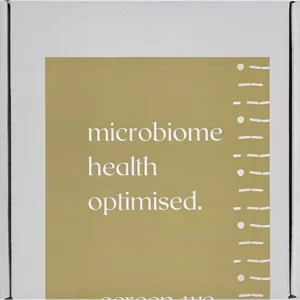What are biofilms?
Bacterial biofilms are a community/group of bacteria that have created a matrix structure.[1]. This biofilm forms around a cluster of bacteria, acting to protect them.
Why do biofilms matter?
The structure of biofilms makes it easy for them to ‘stick’ to surfaces, such as your vaginal epithelial [vaginal lining]. This makes them much more difficult to get rid of. When these biofilms comprise of unwanted bacteria or pathogens, this can mean that you experience recurrent infections.
How are biofilms related to BV?
BV is the most common vaginal infection for people with vaginas during their reproductive years[2]. For many of those with BV, research has found there are bacterial biofilms, which make this difficult to treat. These biofilms are made up of a variety of bacterial species, but the dominant species in these biofilms is usually Gadnerella vaginalis [for more info on this species, see our dedicated blog post on such].
In essence, these biofilm clusters are very good at attaching to surfaces and so can be very difficult to get rid of, which is often why we see BV reoccurring.
How can I get rid of biofilms [and BV] for good then?
Research is still investigating the best ways to get rid of these biofilms. But we believe the best way to do so is to balance your vaginal microbiome.
Having a balanced vaginal microbiome is essential in maintaining good intimate health. The presence of ‘good’ Lactobacillus species prevents the creation of biofilms through preventing both the overgrowth of Gardnerella vaginalis and the ‘sticking’ of other undesirable bacteria species to the vaginal epithelial wall.[3]
This is through a variety of methods including taking up ‘space’ on the epithelial wall, producing lactic acid to maintain a healthy pH, and producing hydrogen peroxide which acts as an antimicrobial[4].
A great way to start with this is to test your vaginal microbiome to see where you are starting from in terms of vaginal health, and so you can tailor your response to such. Knowing what bacterial species are present can be crucial in determining what the most effective plan of action ought to be. ScreenMe’s NGS testing allows for 100% of your microbiome to be screened with 99.9% accuracy, so you can be sure that you can rely on the results you are seeing. You are then paired with an intimate health practitioner, who will discuss your results with you, explain what they mean, and work with you to create a bespoke plan of action to heal your intimate health.
However, if you are not quite ready for this, then good intimate health practises include:
- Avoiding douching
- Avoiding wearing tight gym leggings and other such trousers
- Wearing cotton underwear
- Eating vaginally friendly foods such as sauerkraut and kefir
Fariba Khonsari
[1] https://pubmed.ncbi.nlm.nih.gov/28232119/
[2] https://www.ncbi.nlm.nih.gov/pmc/articles/PMC4718981/
[3] https://www.ncbi.nlm.nih.gov/pmc/articles/PMC4718981/
[4] https://academic.oup.com/jambio/article-abstract/93/5/884/6721860






